Biorobotics Laboratory BioRob
Design and simulation of locomotion of self-organising modular robots for adaptive furniture
Rafael Arco Arredondo - Master Project 2005-2006
Supervisor: Prof. Auke Jan Ijspeert
Rafael Arco Arredondo - Master Project 2005-2006
Supervisor: Prof. Auke Jan Ijspeert
Abstract
The Biologically Inspired Robotics Group (BIRG) at the Swiss Federal Institute of Technology Lausanne (EPFL) is carrying out a project on Modular Robotics for the future Learning Centre of the EPFL: Roombots, Modular Robotics for adaptive and self-organising furniture. It intends to design modular robots for furniture with ability for locomotion, self-assembling, self-organisation, self-reconfiguration and self-repairing.
This Master Project covers the first stage of the Roombots project: the design of the external structure of the prototypes of the modules as well as the simulation of locomotion of some multi-unit robots.
Documents
Report of the project (PDF, 3.7 MB)
Slides of the presentation (without videos) (PDF, 1.5
MB)
Module design
Two modules were explored: the wheeled module and the universal joint module. Finally, the wheeled module was chosen for the muti-unit structures.
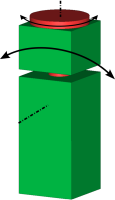
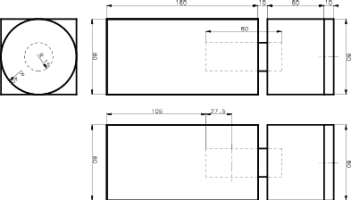
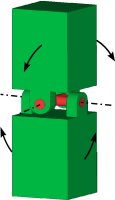
Multi-unit structures
Several pieces of furniture were designed: a stool, a chair, a table and a sofa.
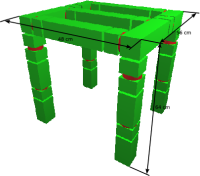



Control of locomotion
Control of locomotion with central pattern generators (CPGs) was implemented in the multi-unit robots. The Matsuoka oscillator was the building block for the CPGs.
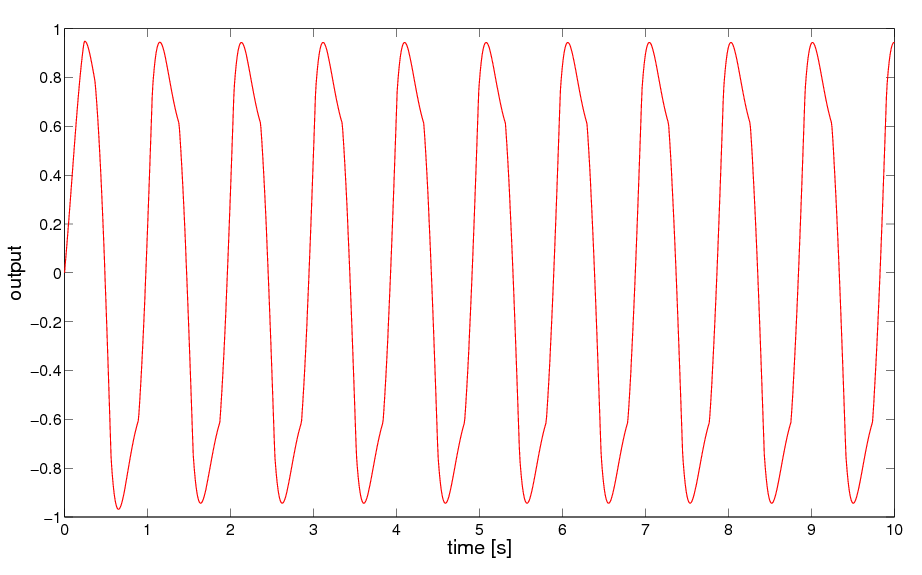
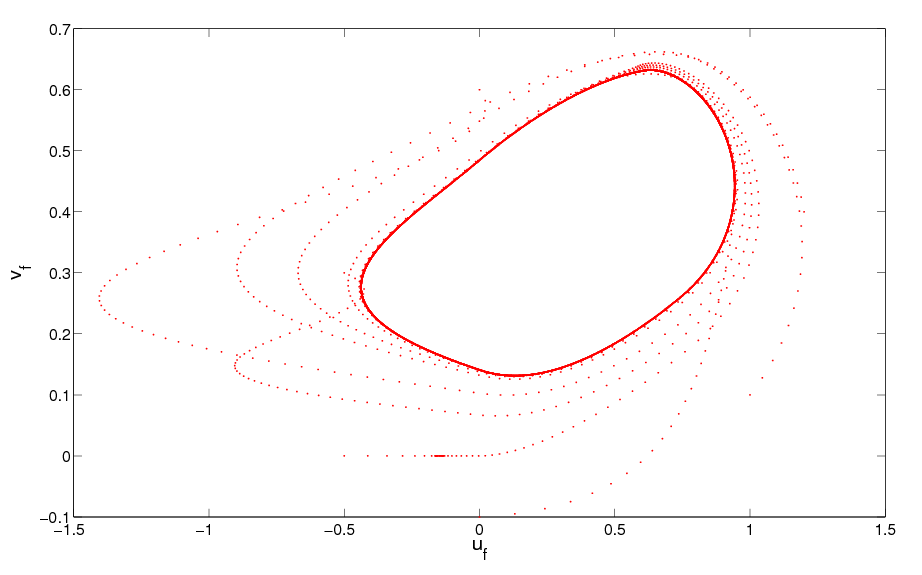
Several strategies were used to move the multi-unit structures: several quadrupedal gaits with open loop, control of direction by modulation of the amplitude and rotation of wheels, sensory feedback to adapt to the terrain, rolling locomotion and online optimisation of locomotion.
Videos
(compressed with MPEG-4 format, can be viewed with the libavcodec library or the ffdshow decoder, among others)
Trotting gait (2.8 MB)
Walking gait (2.6 MB)
Bounding gait (1.6 MB)
Transition from a trotting gait to a bounding gait (3.1 MB)
Rolling locomotion (1.0 MB)
Control
of direction by modulation of amplitude (2.6
MB)
Control
of direction by rotation of wheels (2.7 MB)
Locomotion on irregular surfaces (without feedback):
Walking on a laterally inclined slope (2.7 MB)
Walking on a laterally inclined slope (2.7 MB)
Attempting to overcome a step (2.7 MB)
Locomotion on irregular surfaces (with feedback):
Walking on a laterally inclined slope (2.7 MB)
Walking on a laterally inclined slope (2.8 MB)
Overcoming a step (3.0 MB)
Online optimisation of locomotion (4.7 MB)
Links
Modular Robotics hardware at BIRG
Adaptive
locomotion on Modular Robotics at BIRG
- Archived student projects
- Alain Dysli
- Alexandre Tuleu
- Anurag Tripathi
- Ariane Pasquier
- Aïsha Hitz
- Barthélémy von Haller
- Benjamin Fankhauser
- Benoit Rat
- Bertrand Mesot
- Biljana Petreska
- Brian Jimenez
- Christian Lathion
- Christophe Richon
- Cédric Favre
- Daisy Lachat
- Daniel Marbach
- Daniel Marbach
- Elia Palme
- Elmar Dittrich
- Etienne Dysli
- Fabrizio Patuzzo
- Fritz Menzer
- Giorgio Brambilla
- Ivan Kviatkevitch
- Jean-Christophe Fillion-Robin
- Jean-Philippe Egger
- Jennifer Meinen
- Jesse van den Kieboom
- Jocelyne Lotfi
- Julia Jesse
- Julien Gagnet
- Julien Nicolas
- Julien Ruffin
- Jérôme Braure
- Jérôme Guerra
- Jérôme Maye
- Jérôme Maye
- Kevin Drapel & Cyril Jaquier
- Kevin Drapel & Cyril Jaquier
- Loïc Matthey
- Ludovic Righetti
- Lukas Benda
- Lukas Hohl
- Lukas Hohl
- Marc-Antoine Nüssli
- Martin Biehl
- Martin Riess
- Martin Rumo
- Mathieu Salzmann
- Matteo Thomas de Giacomi
- Matteo Thomas de Giacomi
- Michael Gerber
- Michel Ganguin
- Michel Yerly
- Mikaël Mayer
- Muhamed Mehmedinovic
- Neha Priyadarshini Garg
- Nicolas Delieutraz
- Panteleimon Zotos
- Pascal Cominoli
- Pascal Cominoli
- Patrick Amstutz
- Pedro Lopez Estepa
- Pierre-Arnaud Guyot
- Rafael Arco Arredondo
- Raphaël Haberer-Proust
- Rico Möckel
- Sacha Contantinescu
- Sandra Wieser
- Sarah Marthe
- Simon Blanchoud
- Simon Capern
- Simon Lépine
- Simon Ruffieux
- Simon Rutishauser
- Stephan Singh
- Stéphane Mojon
- Stéphane Mojon
- Sébastian Gay
- Vlad Trifa
- Yvan Bourquin
